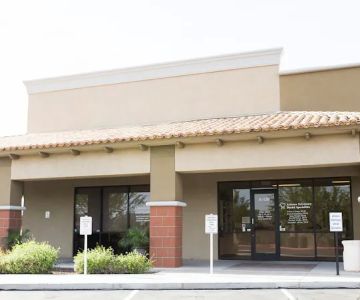How to Handle Pet Dental Emergencies: A Step-by-Step Guide
As a pet owner, I’ve always understood the importance of regular veterinary checkups and maintaining my pets' overall health. However, dental health is one area I initially overlooked. That was until I faced a pet dental emergency firsthand. My dog, Max, was acting strangely, and I soon discovered that he was suffering from a severe tooth infection that required immediate attention. In this article, I’ll walk you through how to handle pet dental emergencies, based on my personal experience and expert advice I’ve learned along the way.
1. Recognizing a Pet Dental Emergency
One of the most important aspects of handling a pet dental emergency is recognizing when your pet needs urgent dental care. Pets, like dogs and cats, can suffer from a variety of dental issues such as broken teeth, abscesses, or severe gum infections, which can lead to painful consequences if not addressed in a timely manner.
Some common signs that your pet may be experiencing a dental emergency include:
- Excessive drooling: If your pet is drooling more than usual, it could indicate pain or discomfort in the mouth.
- Bad breath: Foul-smelling breath can be a sign of an infection or a buildup of bacteria in the mouth.
- Difficulty eating or chewing: If your pet is avoiding food, seems reluctant to chew, or drops food from their mouth, it may indicate a dental problem.
- Swollen gums or face: Swelling around the mouth or face can point to an abscess or tooth infection.
- Behavioral changes: Pets in pain may become more irritable or lethargic than usual.
When I noticed these signs in Max, I knew something was wrong and that I needed to act fast. Recognizing the signs early can be the difference between saving a tooth and allowing the issue to escalate.
2. Immediate Steps to Take in a Pet Dental Emergency
Once you’ve recognized that your pet is experiencing a dental emergency, it’s essential to take immediate action to alleviate their pain and prevent further damage. Here’s what I did during Max’s dental emergency, which helped manage the situation before reaching the vet:
- Keep your pet calm: Dental pain can make pets anxious, so I made sure to keep Max in a quiet, calm environment while I assessed his condition. Keeping your pet calm can prevent them from becoming more agitated or injured.
- Inspect the mouth: If your pet allows, carefully check their mouth for visible issues such as broken teeth, bleeding, or swelling. However, if your pet is in too much pain or unwilling to cooperate, don’t force it—this could make the situation worse.
- Stop bleeding: If there’s bleeding, apply gentle pressure with a clean cloth or gauze. Avoid using any antiseptic or over-the-counter remedies unless recommended by your vet, as some products may be harmful to pets.
- Do not give pain medication: While it may seem tempting to give your pet over-the-counter human pain medication, this can be dangerous. Always consult a vet before giving your pet any medication.
These initial steps helped Max calm down, and I felt reassured that I was doing everything I could to keep him stable while waiting for professional help.
3. Getting Professional Help for a Pet Dental Emergency
The next step is getting your pet to a veterinary clinic as soon as possible. Pet dental emergencies often require immediate intervention to prevent further complications like infection, tooth loss, or damage to the jaw. In Max’s case, I rushed him to an emergency veterinary clinic that specializes in dental care for pets.
When you visit the vet, be prepared to give them as much information as possible, including:
- Signs and symptoms: Inform the vet of the symptoms you’ve noticed in your pet, such as swelling, drooling, or difficulty eating.
- Recent accidents: If your pet has recently had an accident, such as a fall or injury, let the vet know as it could help them assess the severity of the dental issue.
- Medical history: Provide the vet with your pet’s medical history, including any prior dental issues or treatments.
At the clinic, Max was given a thorough oral examination, which revealed a deep abscess. The vet cleaned the area and prescribed antibiotics to treat the infection. In some cases, pets may need surgery or tooth extraction, so it’s important to follow your vet’s instructions closely and monitor your pet’s recovery.
4. Preventing Future Dental Emergencies in Pets
While I was relieved to have Max’s dental issue treated, I also realized how important it is to proactively care for my pet’s dental health to prevent future emergencies. Over the past few months, I’ve incorporated several practices into Max’s routine to help maintain his oral health:
- Regular tooth brushing: I now brush Max’s teeth regularly using pet-safe toothpaste and a toothbrush. This helps remove plaque and prevent gum disease.
- Dental chews: Max enjoys dental chews that help keep his teeth clean while also satisfying his natural urge to chew.
- Annual dental check-ups: I make sure Max gets annual dental check-ups from his vet. This allows any potential issues to be caught early, preventing emergencies.
By making these simple changes, I’ve been able to significantly improve Max’s dental health, ensuring that he stays comfortable and happy without the risk of dental emergencies.
5. Final Thoughts on Pet Dental Emergencies
Handling a pet dental emergency can be a stressful experience, but knowing what to do can make a huge difference in your pet’s health and well-being. By staying calm, acting quickly, and seeking professional care, you can ensure that your pet’s dental health remains in top shape. Max is doing much better now, and I feel more confident in managing his dental care moving forward.
If you notice any signs of dental issues in your pet, don’t wait—seek help from your veterinarian as soon as possible. With proper care and attention, you can help your furry friend avoid the pain and complications of dental emergencies.











